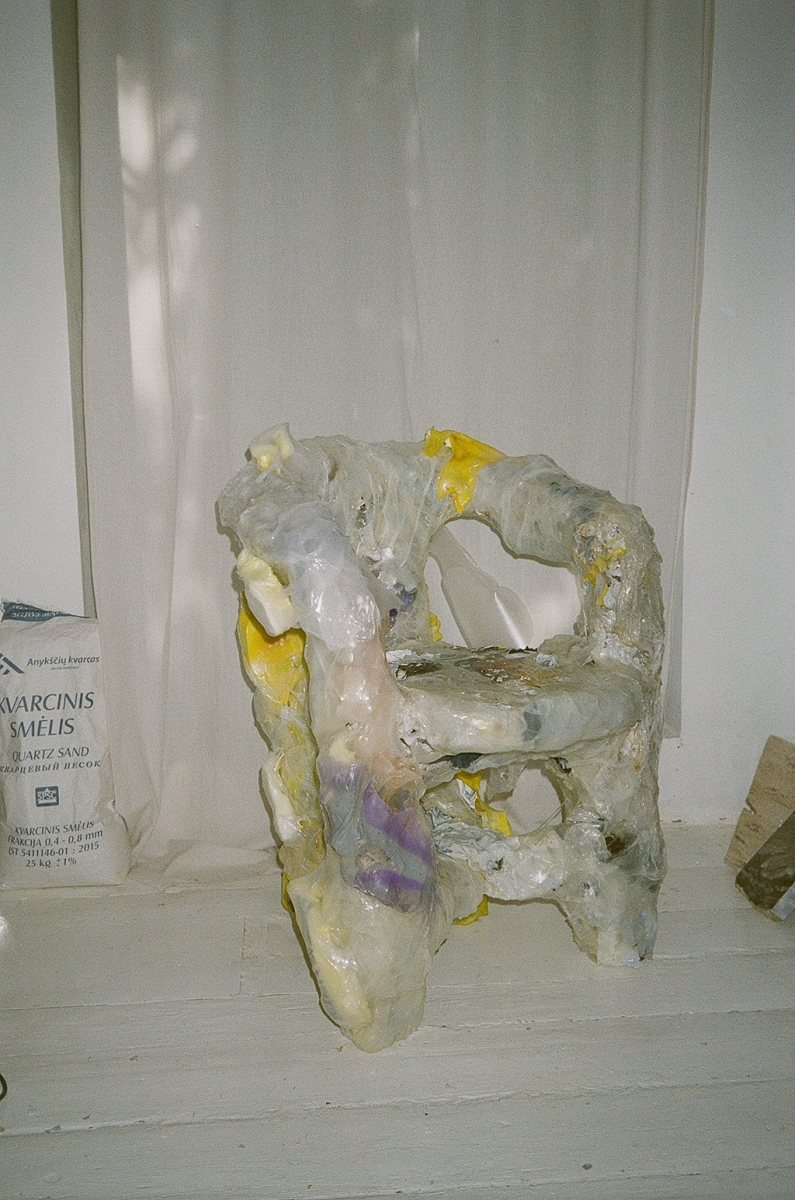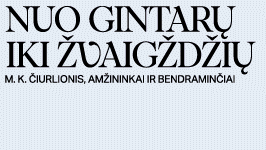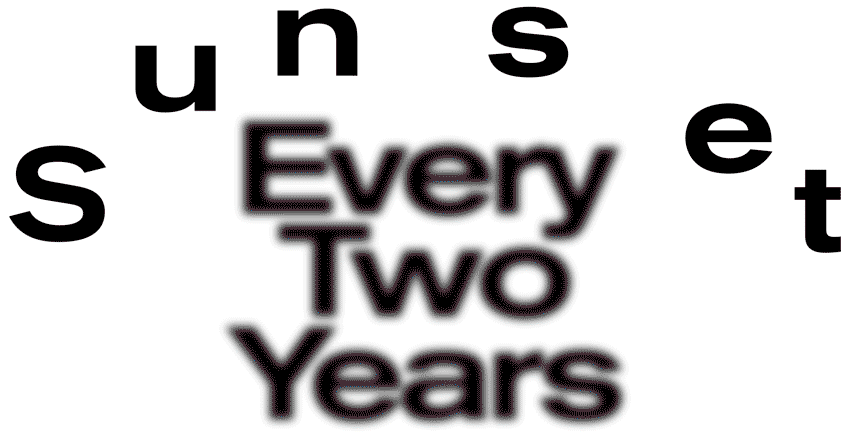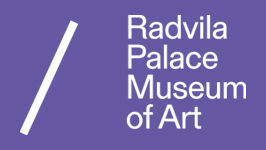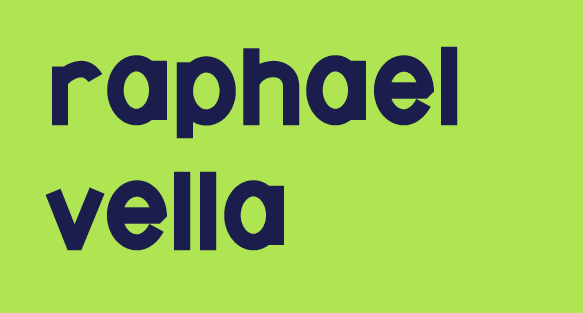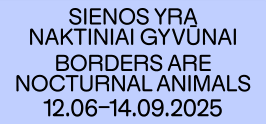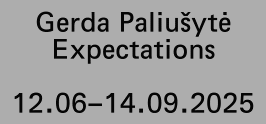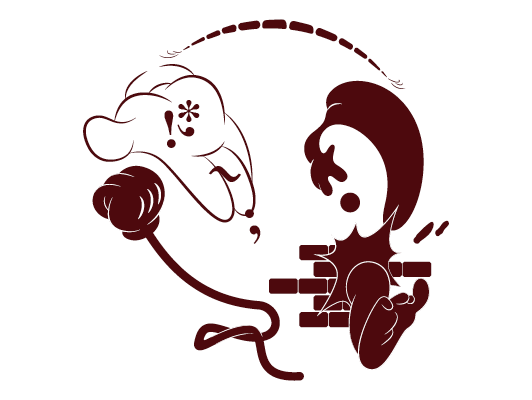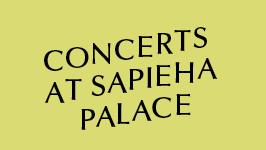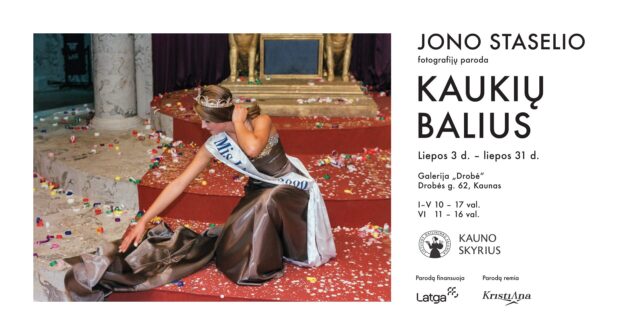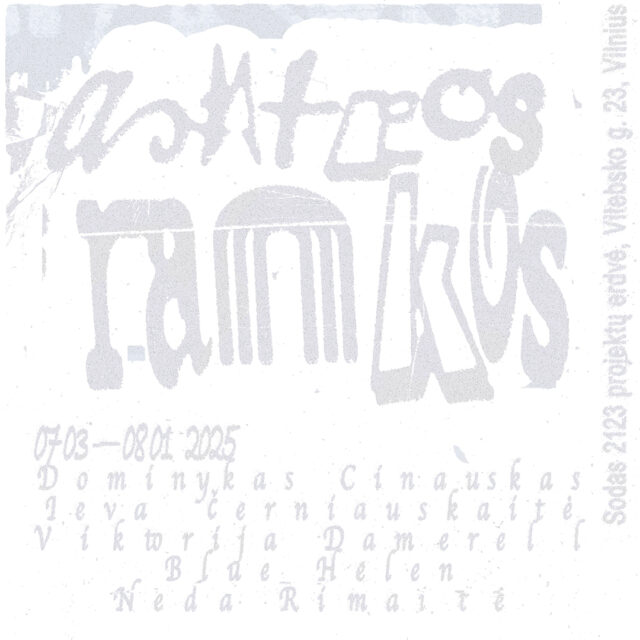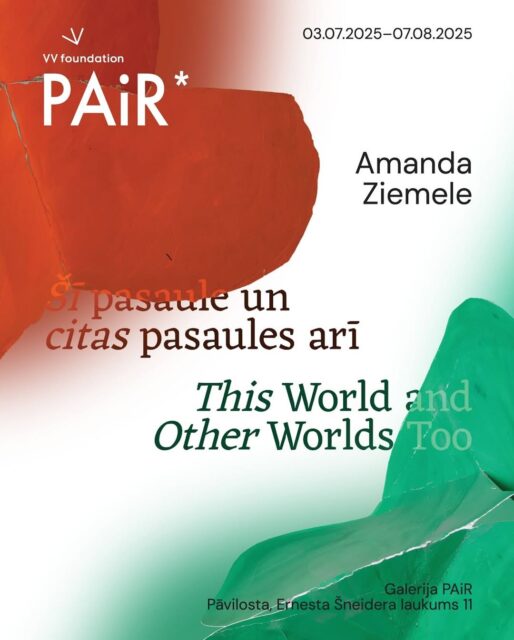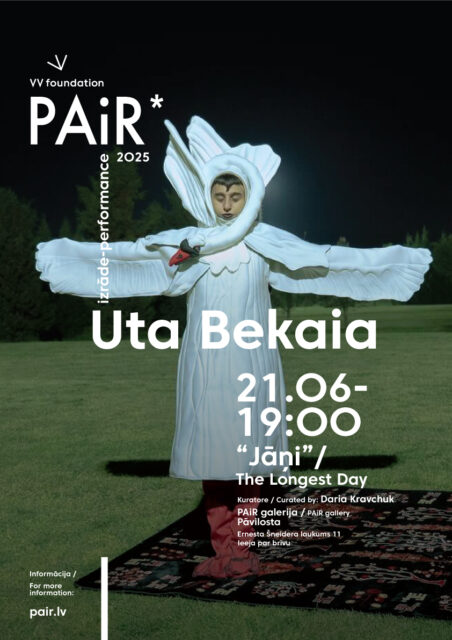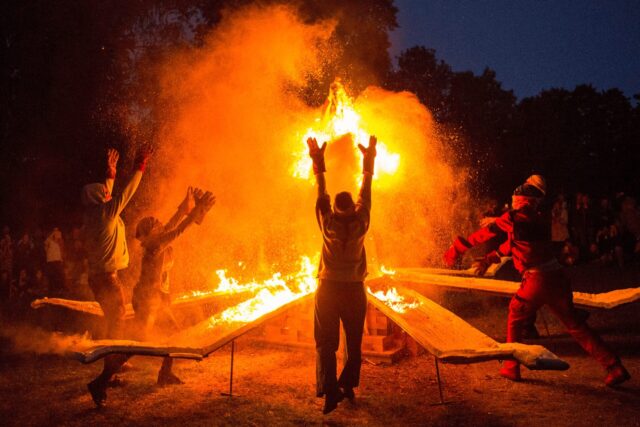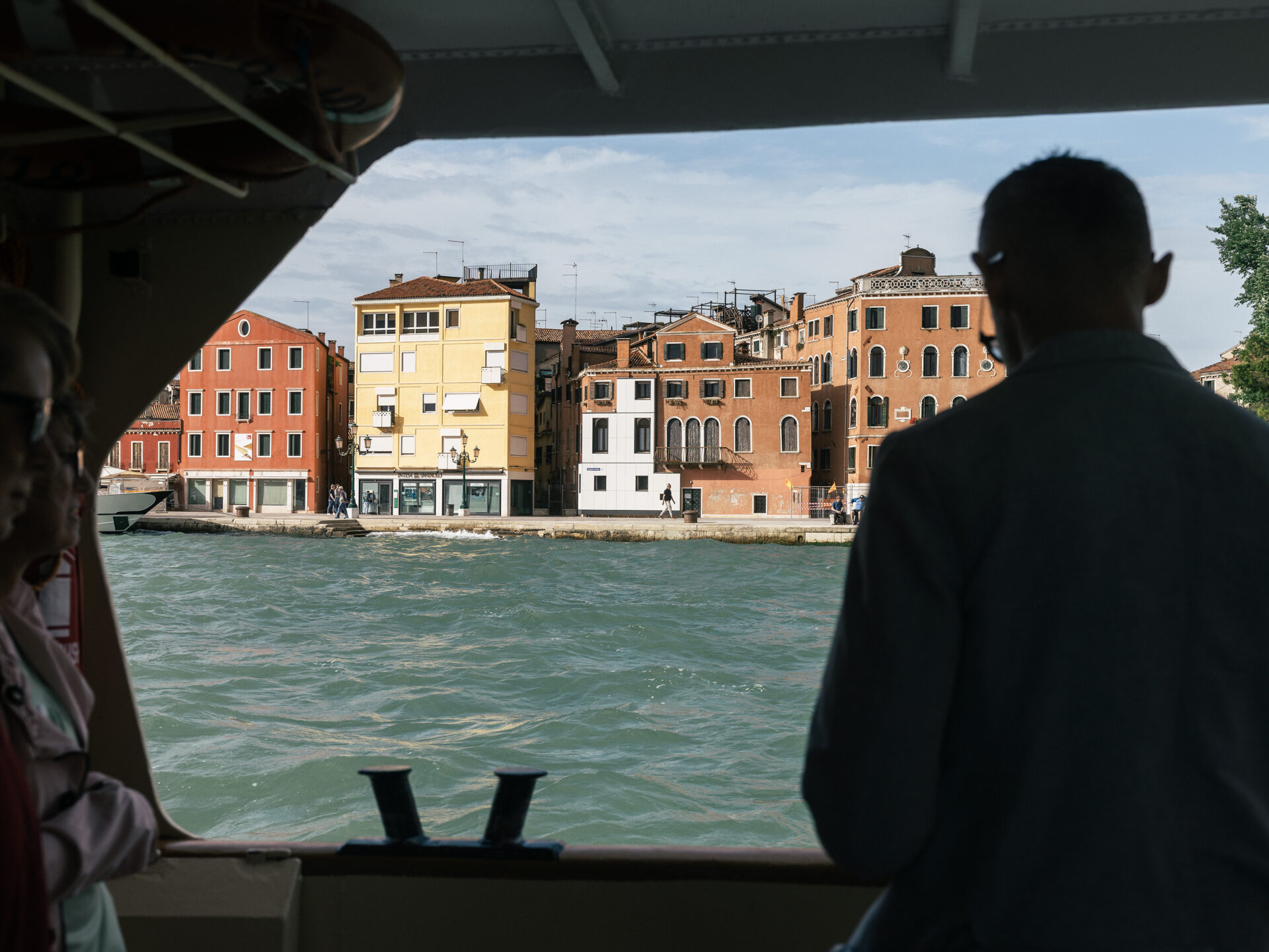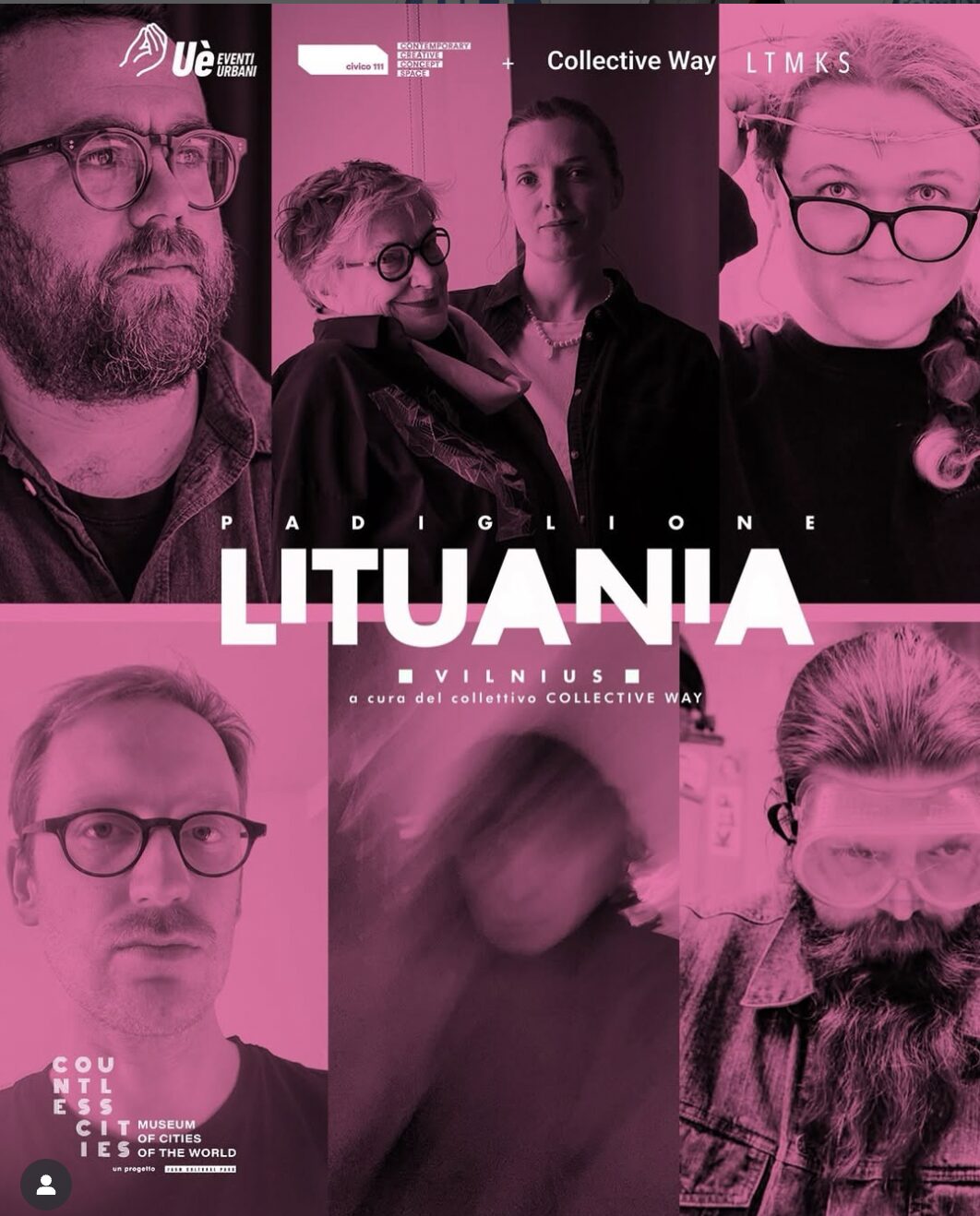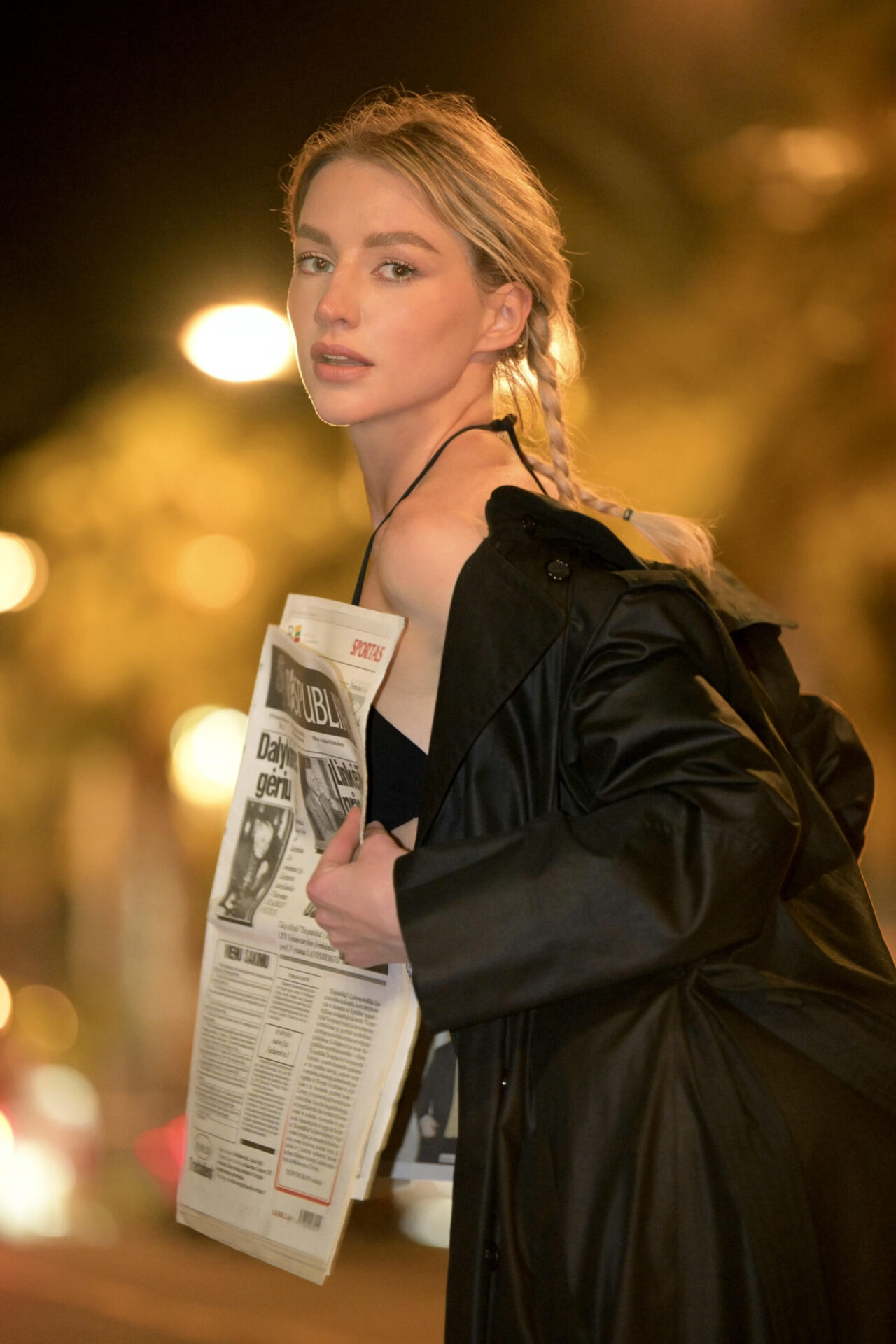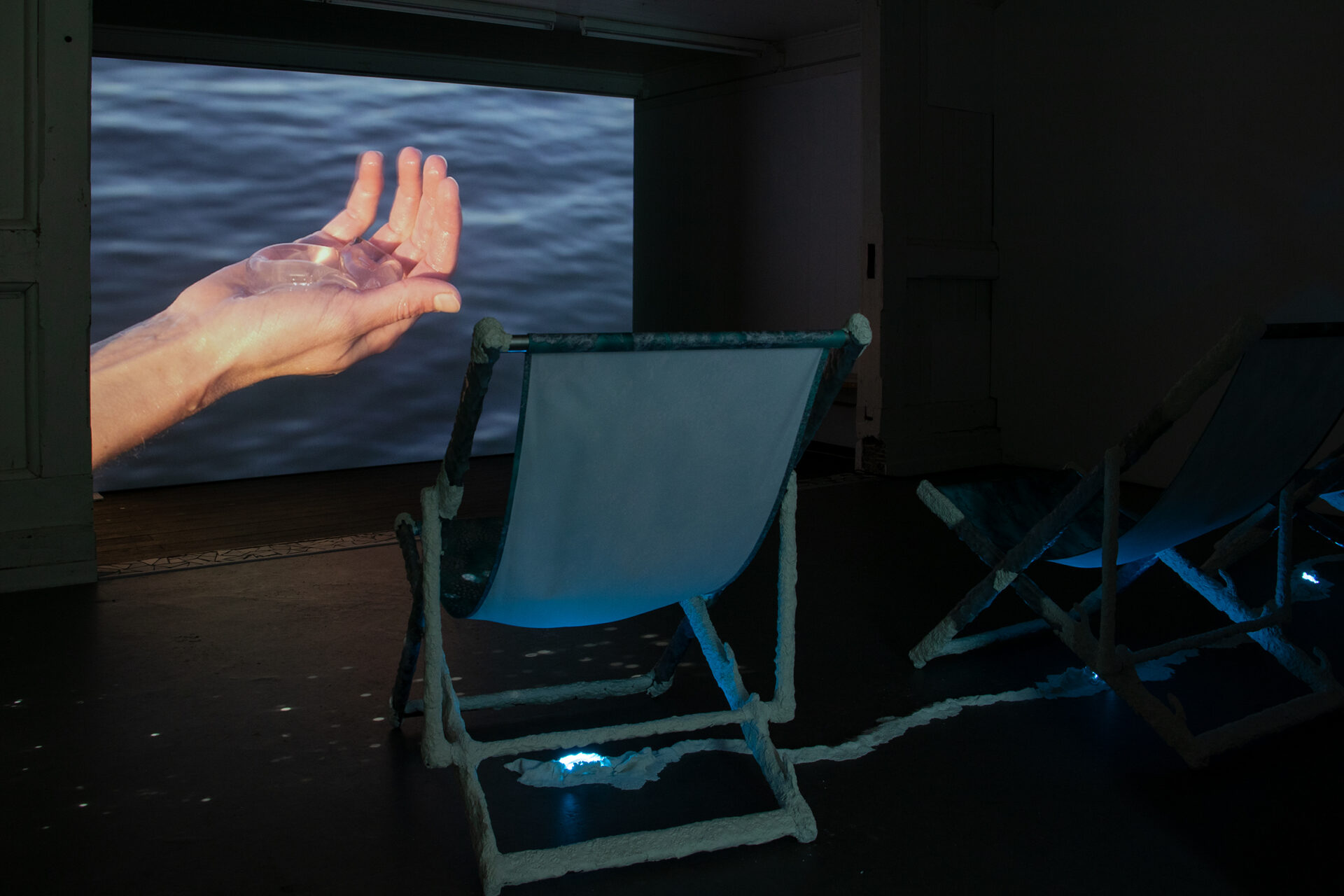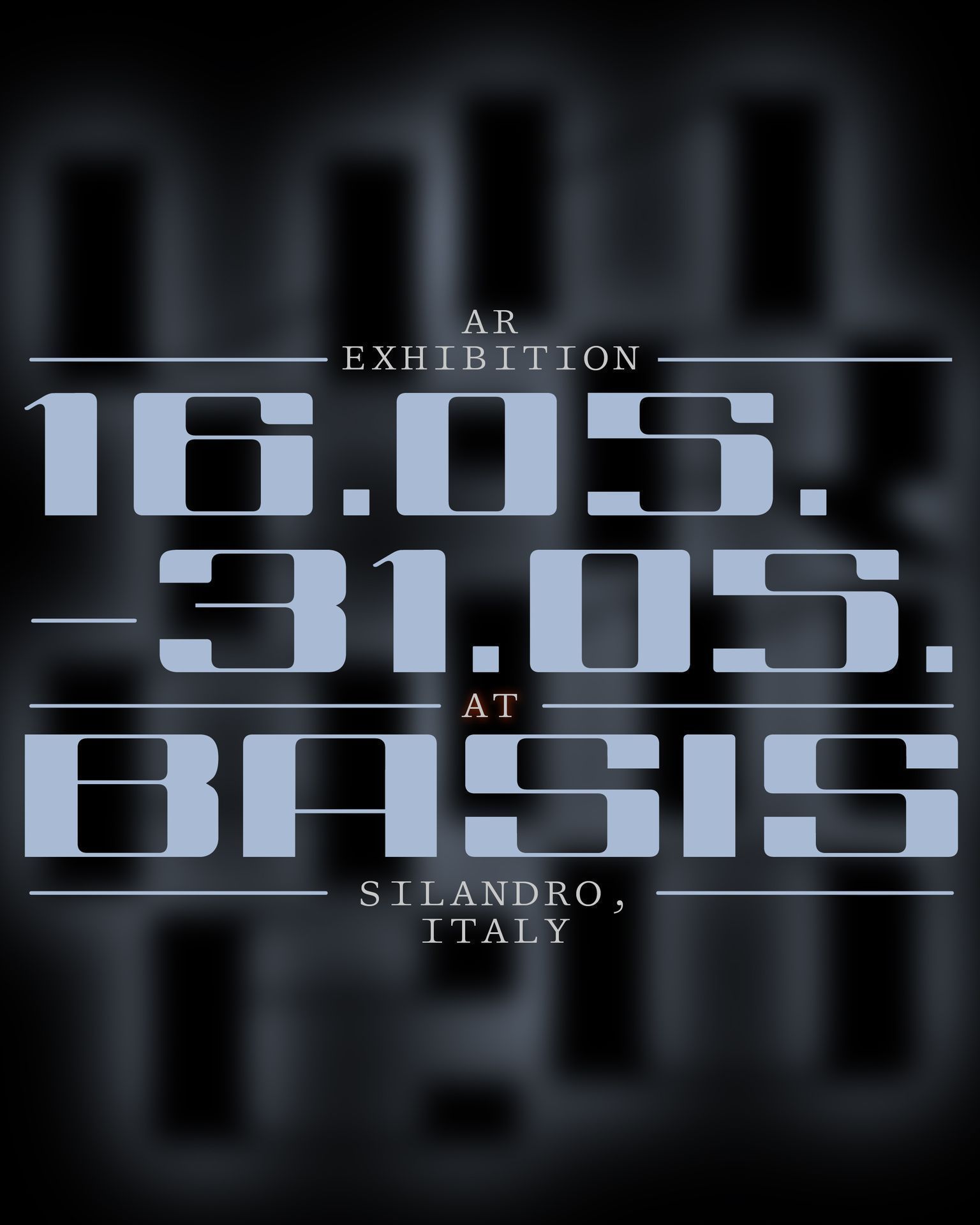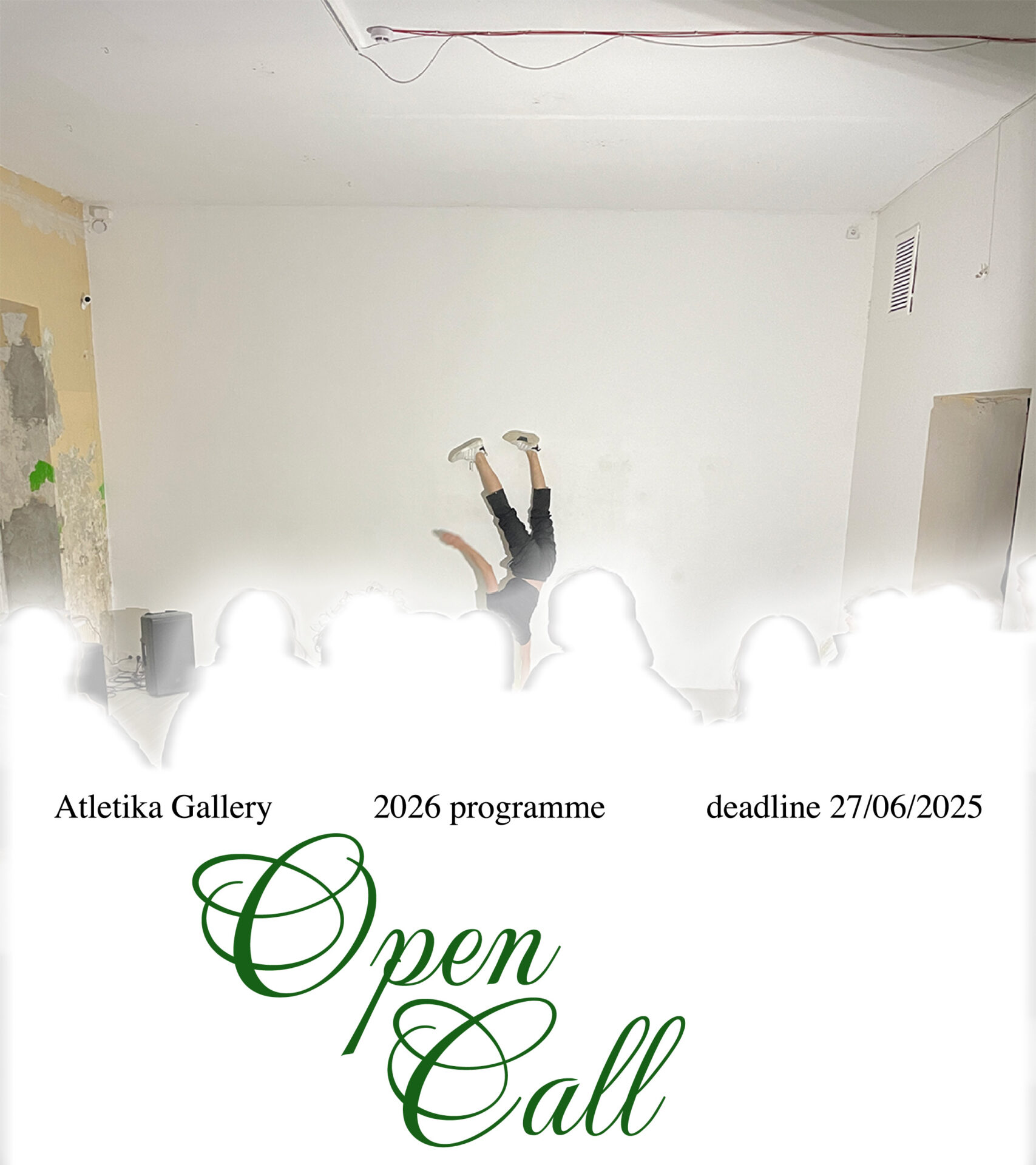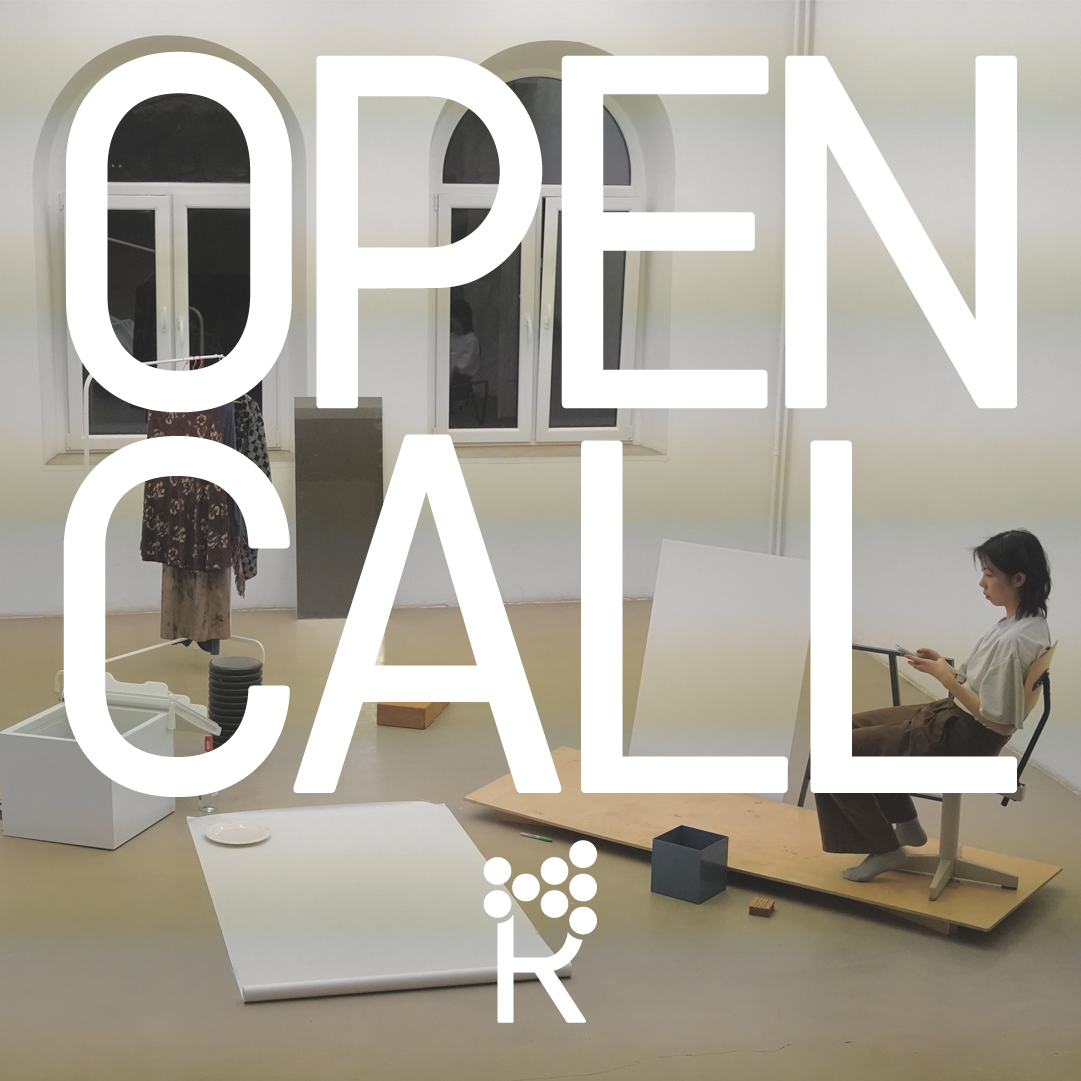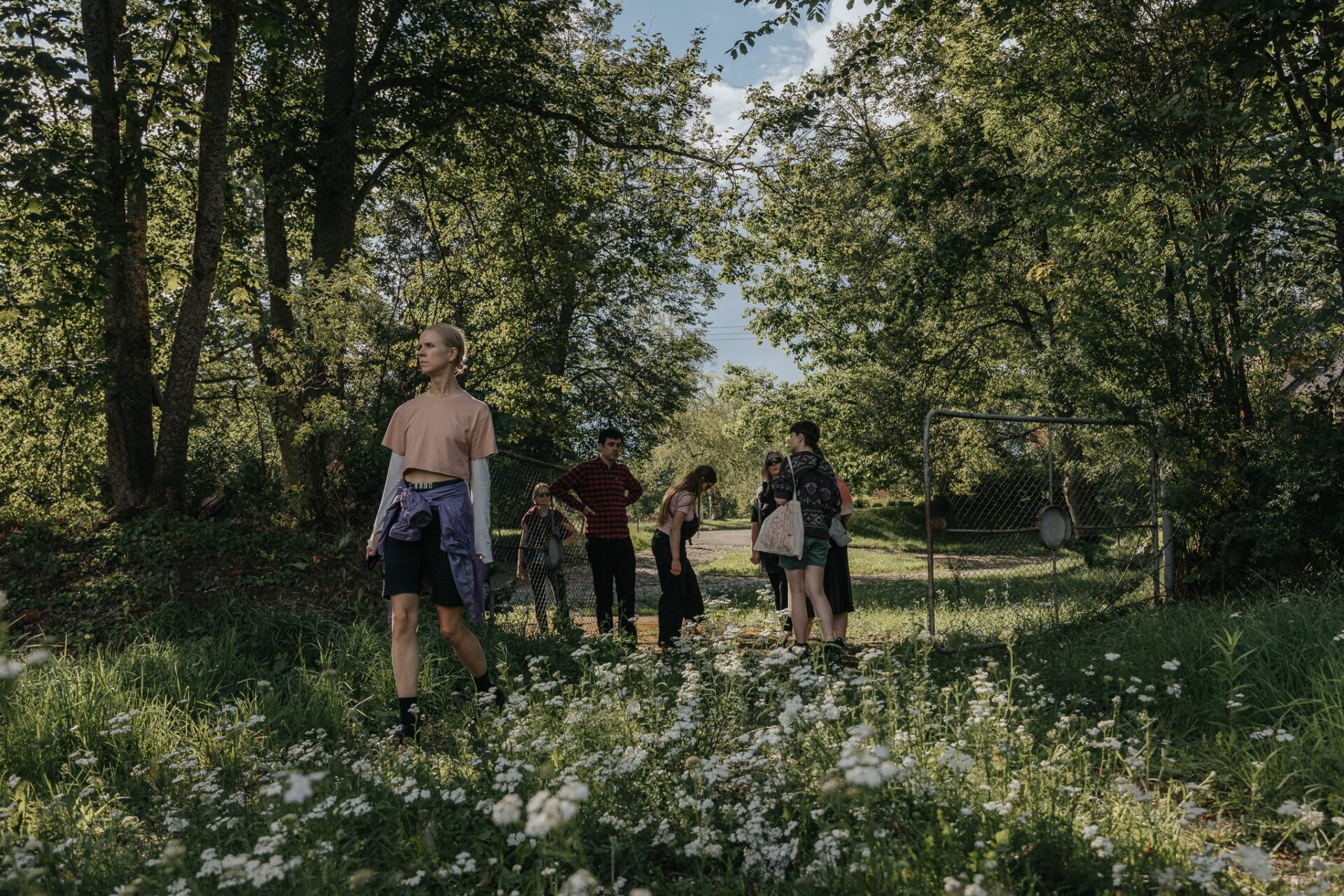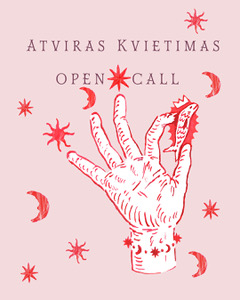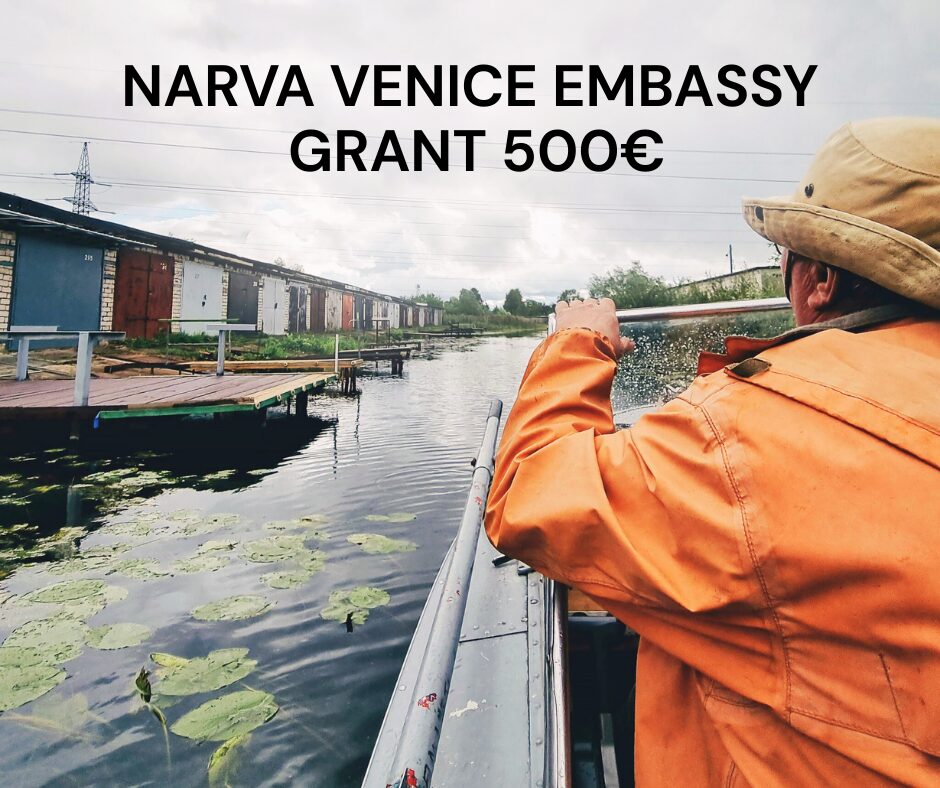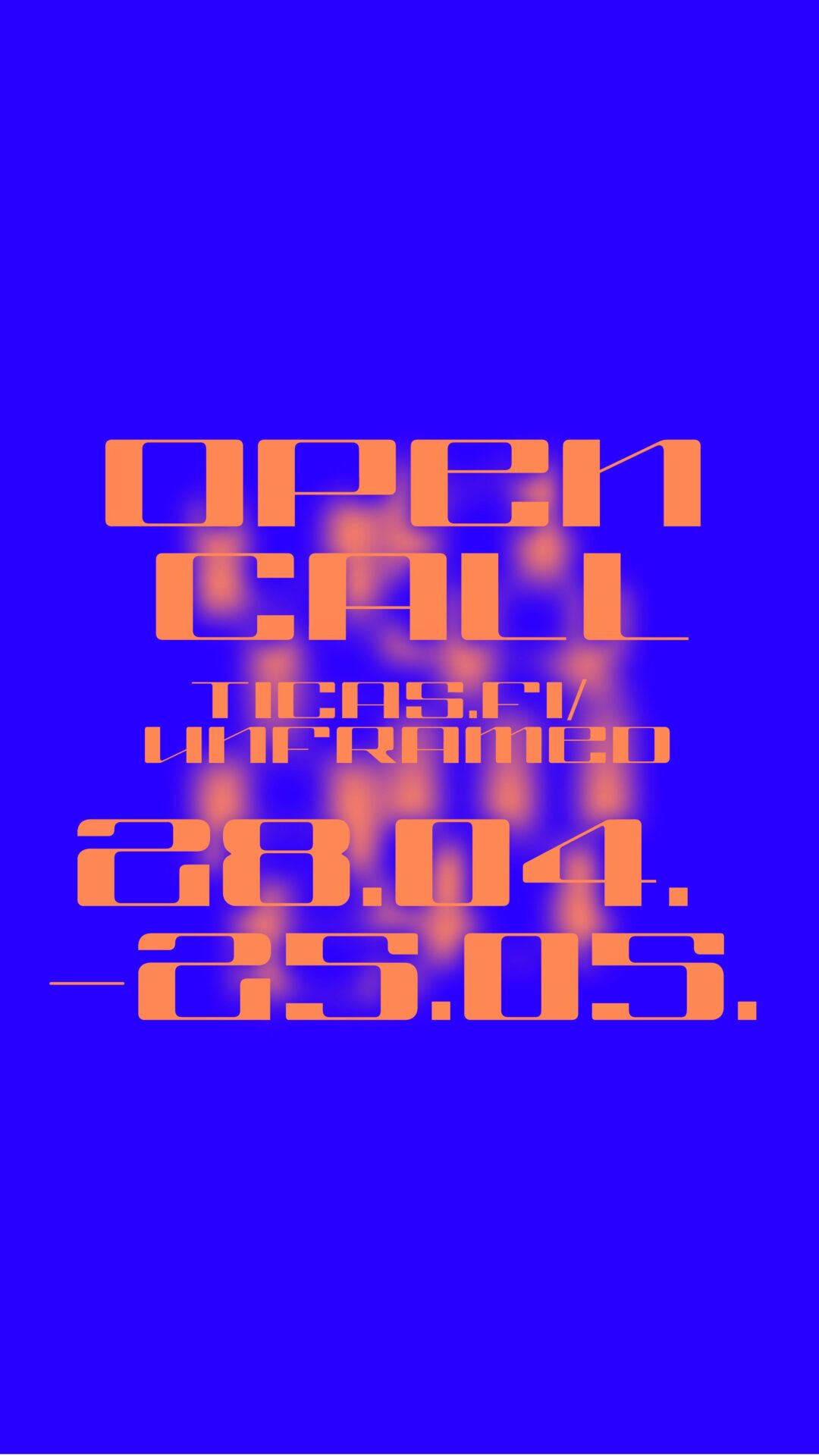Monika Valatkaitė: Kotryna, let’s begin by getting to know each other. From reading about you, I learned that you graduated from Vilnius Academy of Art. You take part in group exhibitions as an object designer-artist, and you are represented by the VARTAI gallery. How did design come into your life, and what part has it played ever since?
Kotryna Butautytė: Design came into my life rather late, when I was twenty. Before that, I was deeply involved in the world of dance, as I was studying at the M.K. Čiurlionis School of Arts. However, the transfer from one to the other happened quite naturally, as I could see design as just another way for me to create with(in) space. I wanted to work with my hands. Movement is still very important to me, so I regard design as a medium which allows one to observe a piece of art in relation to those who encounter it. In a way, it surpasses the unapproachability of the artwork, as it offers the viewer a chance to experience (or to imagine experiencing) the object through her own body, her own everyday life, and so to charge it, or inversely, to charge up from it. It is important for me to observe the changeability of the object. I believe that the final design of any object doesn’t actually exist. I am drawn to infinities.
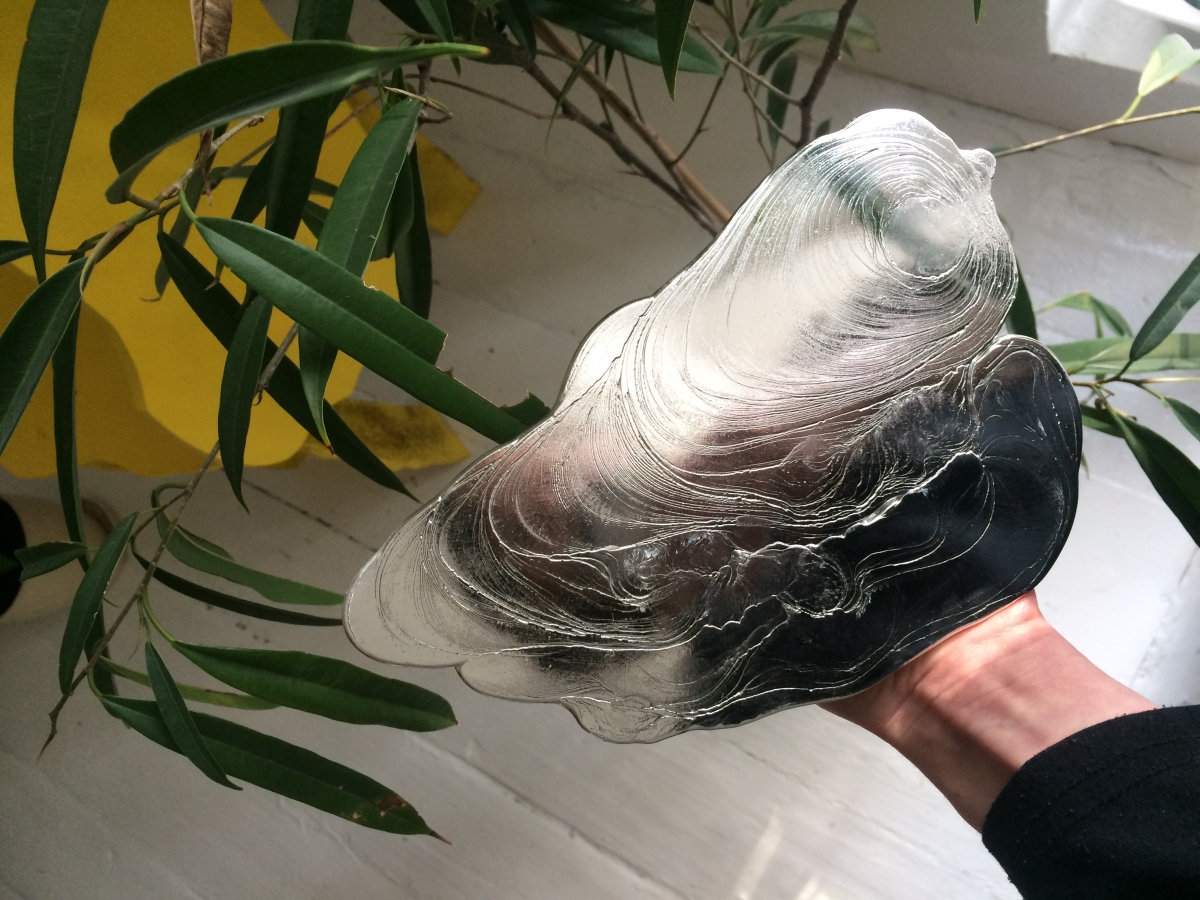
From Kotryna Butautytė’s archive
MV: Design has a broad meaning: let’s clarify that you create conceptual objects. Can you describe your creative practice in brief? What’s at the centre of it? What questions or issues do you aim to actualise?
KB: When I create, I never think about changing the world or solving problems. What concerns me is the process of creation itself. I want to observe how people interact with objects, how they behave around them and how they react to them, the further life of the object, and how it responds under different circumstances. How objects absorb information is very interesting to me, information both about their creator or producer and about their consumer or observer. My great-grandmother who fled the war told me a story about how she came back to Vilnius. She was on a train, and since there were no unoccupied seats, she sat on one of the armchairs she’d bought when she was abroad and was bringing home. I remember there was a particularly wobbly armchair in my childhood home, and I was absolutely sure that was the one my great-grandmother travelled on. It was only when I grew up that I realised it probably became wobbly naturally over time; however, to me, it remained special, even mythological.
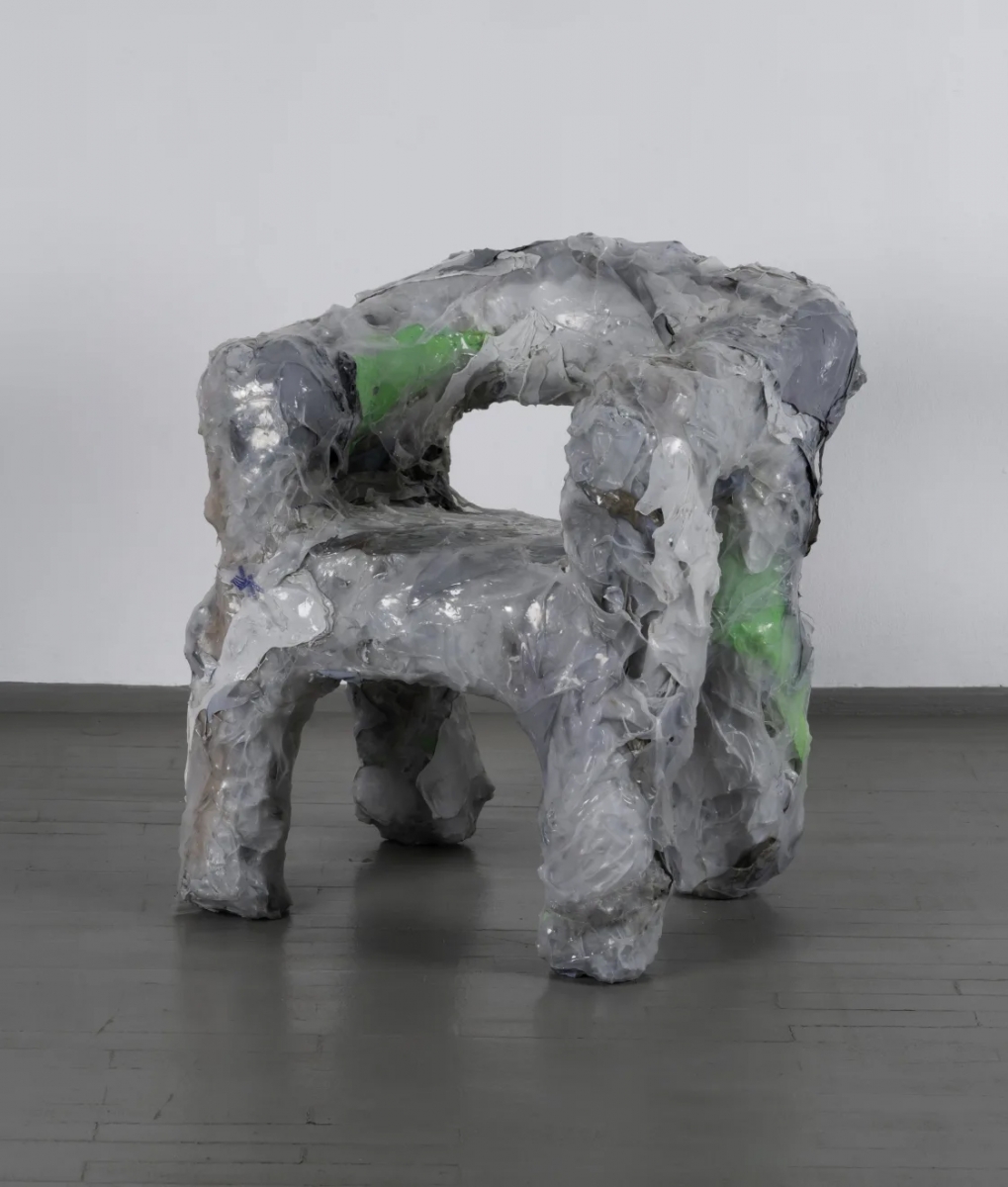
Photo: Stasys Mačiulskas
MV: What forms or influences the emergence of your ideas as object visions?
KB: Various ridiculous things, or more recently, very mundane. For instance, using an item for a use it was not intended for, or making a tool from other tools. In other words, creative work is often conditioned by the necessity to get by with what you have. Such visions come at moments when, say, you are standing on a stool to reach something, or you are rolling out dough with a rolling pin; there’s an infinite number of such examples.
MV: As the viewer encounters the final work, it reaches its final form. And yet before the thought gets embodied in a physical form, the maker is immersed in a process, in a series of acts that are invisible to the viewer. Can you expand on yours: how many stages does a single object go through, from an idea’s inception to its realisation?
KB: My work starts with the material. If I feel the need, I make a small model; but I never sketch or make 3D models. I can ‘see’ very clearly the sketch in front of my eyes. It comes to me like a vision, and doesn’t leave me until I start making it. And once I do, it naturally becomes altered. I usually follow a rule that I should allow the material to act of its own accord, at least for some time. In other words, I have to make it independent from me. The material becomes my performer, while I direct the choreography (smiling). Of course, in time, I begin to understand different materials better. I begin to foresee what it is going to be like. Regarding techniques, although I currently work mostly with metal, I would never settle for just one technique. I usually refrain from following the advice of craftsmen, I think because they usually oppose my ideas. So I make many mistakes, which may eventually take quite a bit of time. However, through experimentation, I discover new methods.

Group exhibition, Vartai gallery. Photo: Norbert Tukaj
MV: Since you work straight from the imagination, I wonder how you recreate your ‘visions’ as objects. Is it often the case that the result surprises you with the exactness of how you’ve managed to recreate the visualisation of your imagination, or inversely, with the deviation from the originally conceptualised object?
KB: My goal is never to recreate an exact copy of the initial vision. It is often a starting point, from which I discover many variations and possibilities. I continue to sketch inside my head. Sometimes it is a completely ‘undigested’ vision of an object. Nonetheless, I feel the need to develop it. That’s how I made the plastic armchair, for example.
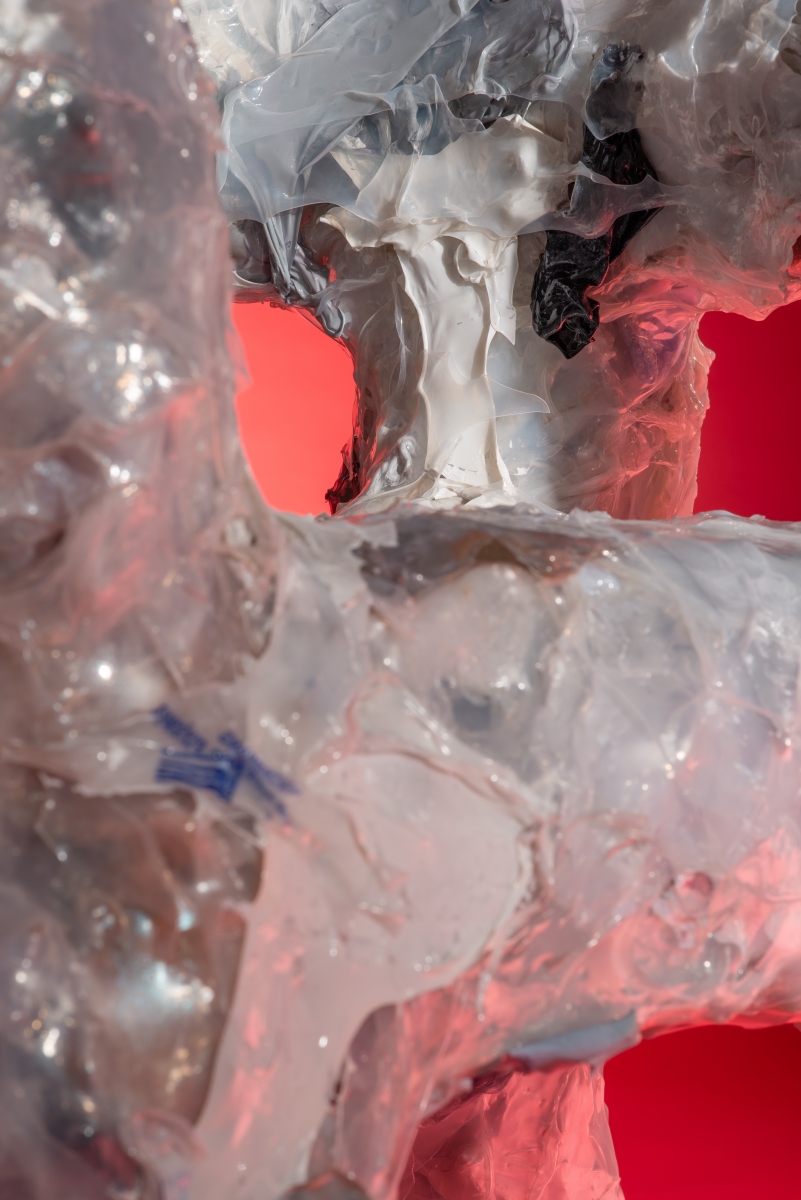
Photo: Jonas Balsevičius
MV: Talking about the plastic armchair, once you hear the word plastic you are immediately drawn in to talking about materiality in the context of ecology. What plastic (recycled, non-recyclable, or otherwise) did you use for it, and why?
KB: In the case of this armchair, my aim was to materialise the vague primary vision, which had the form of an armchair; however, neither the material nor the exact shape was clear to me. For a few minutes I saw an odd lumpy object resembling an undigested and spat-out form, of unknown material. I interpreted it to be covered with a layer of some old thought-garbage, that’s why I chose the material, namely, the used plastic packaging that I would collect from a café I was working at then. There’s nothing very ecological about it. Plastic was simply a material to me. Functionality wasn’t something I considered much, either. After all, the work wasn’t about that. I simply made it to be durable, and quite unexpectedly it turned out to be ergonomic for sitting on. Regarding function(ality), I believe its importance is way over-emphasised. We all know that a chair isn’t simply meant to be sat on, and a knife isn’t simply meant to be used for cutting. When you have an object, you do whatever you like with it.
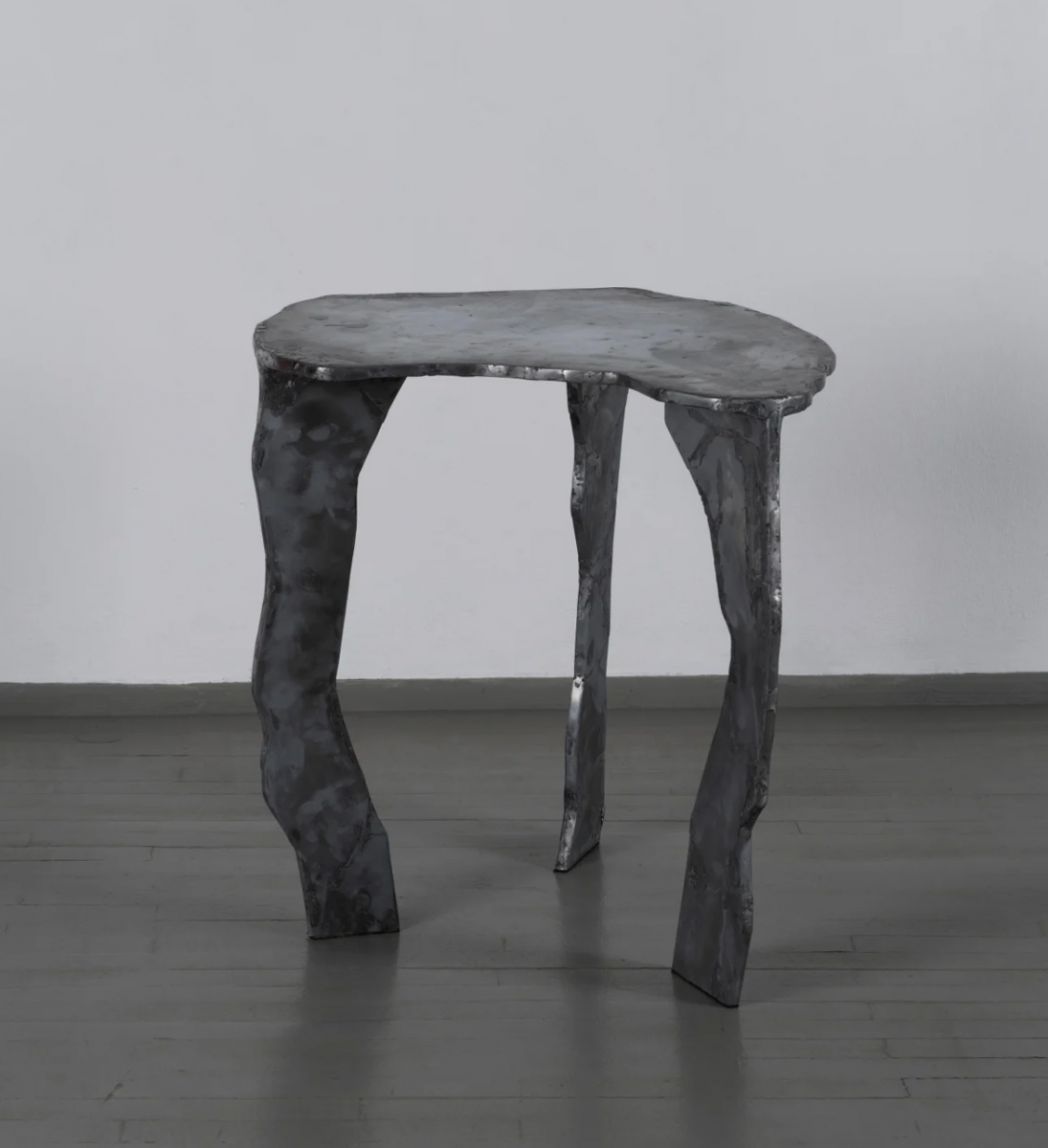
Photo: Stasys Mačiulskas
MV: Today furniture is usually produced industrially, which makes the homes of different people look the same. Take the products from IKEA: they make uniform not only personal but also public spaces. You yourself create conceptual design objects: more often than not they are unique. However, the very moment of repetition is maintained. For example, you used the melted metal aesthetic from your work Frank Table to make coasters. Is that a mark of your previous experimentation, or are you creating a series, a collection (as a specific continuous visual identity)? Is the uniqueness of an object important to you? Do you believe in it?
KB: These objects were created ten years apart. The materials differ as well. The coasters were cast from pewter, whereas the table was made of bent zinc plate. I think the repetition emerged because of my tendency to emphasise forms that appear spontaneously, such as a puddle in the case of the coaster, as well as choreographic hand gestures or clumsy strokes while cutting parts of the table. They also share the ‘visibility’ or the flow of time on their surfaces. I regard that as naturally occurring decor, an outcome of the process. I am not against replication, especially if it’s limited, or some object series; however, I am not tempted to go into mass production in the current context of excess.
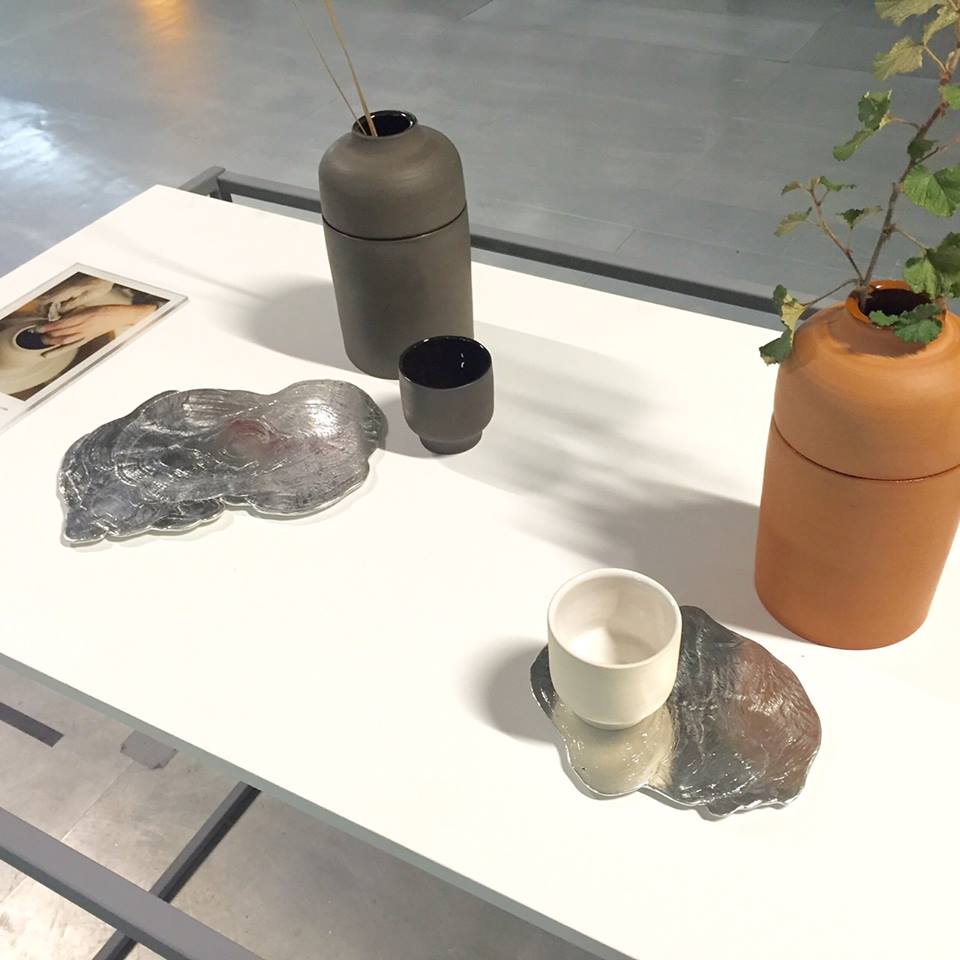
From Kotryna Butautytė’s archive
MV: We began our conversation with how you moved from the world of dance to that of design. After hearing that, I was able to read the description of your piece Frank Table in a completely new light. It said: ‘The table was designed like a jigsaw puzzle made of small scraps of metal. The joints became part of the design, not flaws. Nothing is hidden. Scars, folds, wrinkles, a free hand cutting the silhouette that moves the way you want it to.’ This reminded me of a moving body, of visibly tightening muscles and emerging tendons. Does this description of your work have any links with embodied movement?
KB: The important things here are the spots and welding marks. That’s how the links to physicality can primarily be traced. In my opinion, many of us consider how twisted the prevailing perception of beauty is: it makes us hide the signs of time, scars, and other changes happening to our bodies. These efforts clearly also exist in the objects that we own, in our clothes, and even in our food. I find it interesting, though, that a table can stand proudly exposing its welding seams. That’s why I don’t want to hide them or other similar things. Movement here is dance in progress, since my hand (which isn’t straight) cuts without rulers or sketches.
MV: You mentioned that you’re concerned not only with the relationship between the artist and the object, but also with the relationship between the object and the viewer, and even the consumer. How do your works interact with their audience? Do you get any feedback? In other words, do the objects that you create charge up with the viewers’ experience?
KB: Of course. Once the work leaves the studio, it is let out into the world to collect information or to become it. A piece of furniture is particularly successful at that, since its archetype is recognisable by everyone. The viewer can easily imagine the piece in his own environment, or contextualise it in another way. People like talking about objects when interacting with each other. That’s how interpretations or images of stories in which the objects become characters are formed. Finally, you can act somewhat instinctively with a piece of furniture. For instance, many feel the urge to sit on a chair when at a design exhibition. And that undoubtedly happens to my works as well. I believe that’s very important. I’m curious about how a person feels, what they think about and where they ‘travel to’ when sitting on a particular chair. These things get written into the memory of the object, thus creating new stories.
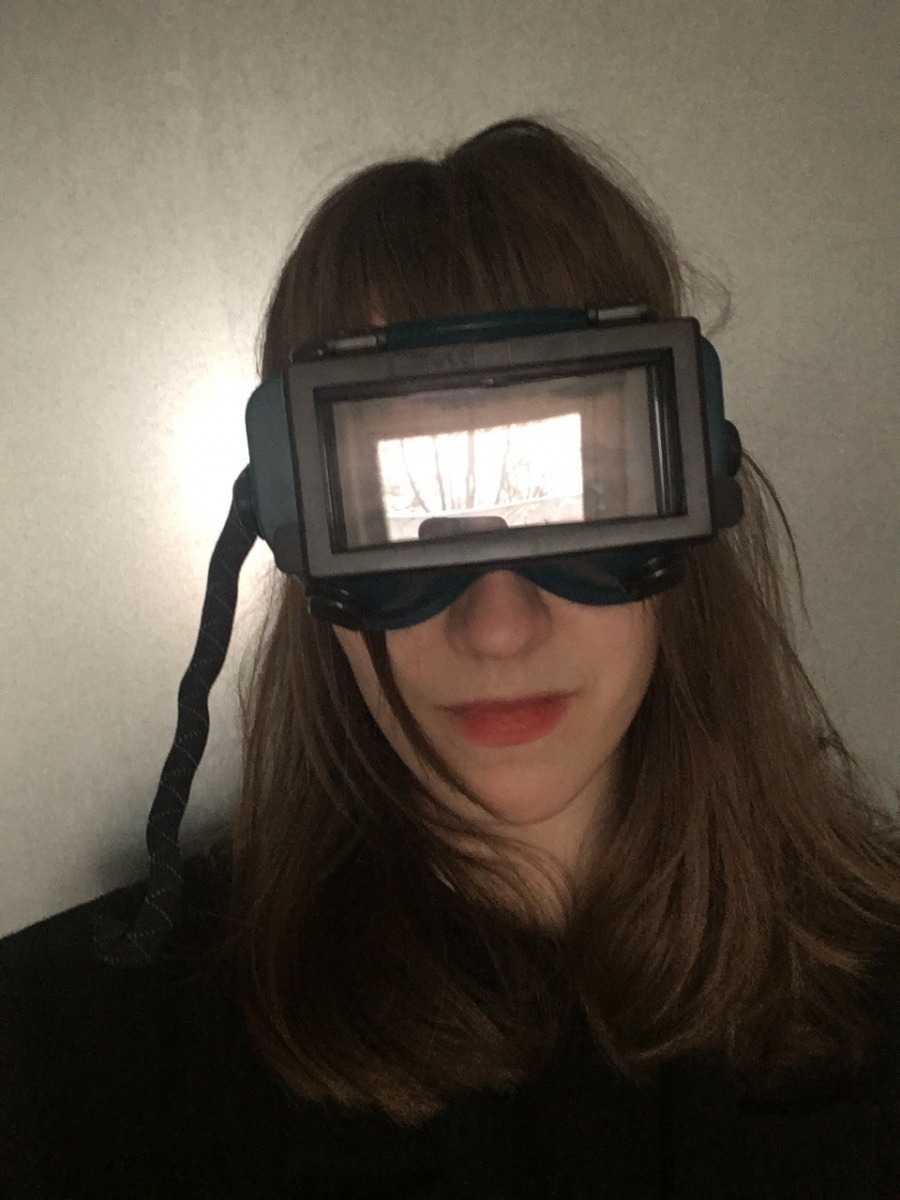
Kotryna Butautytė

Photo: Saulė Gerikaitė
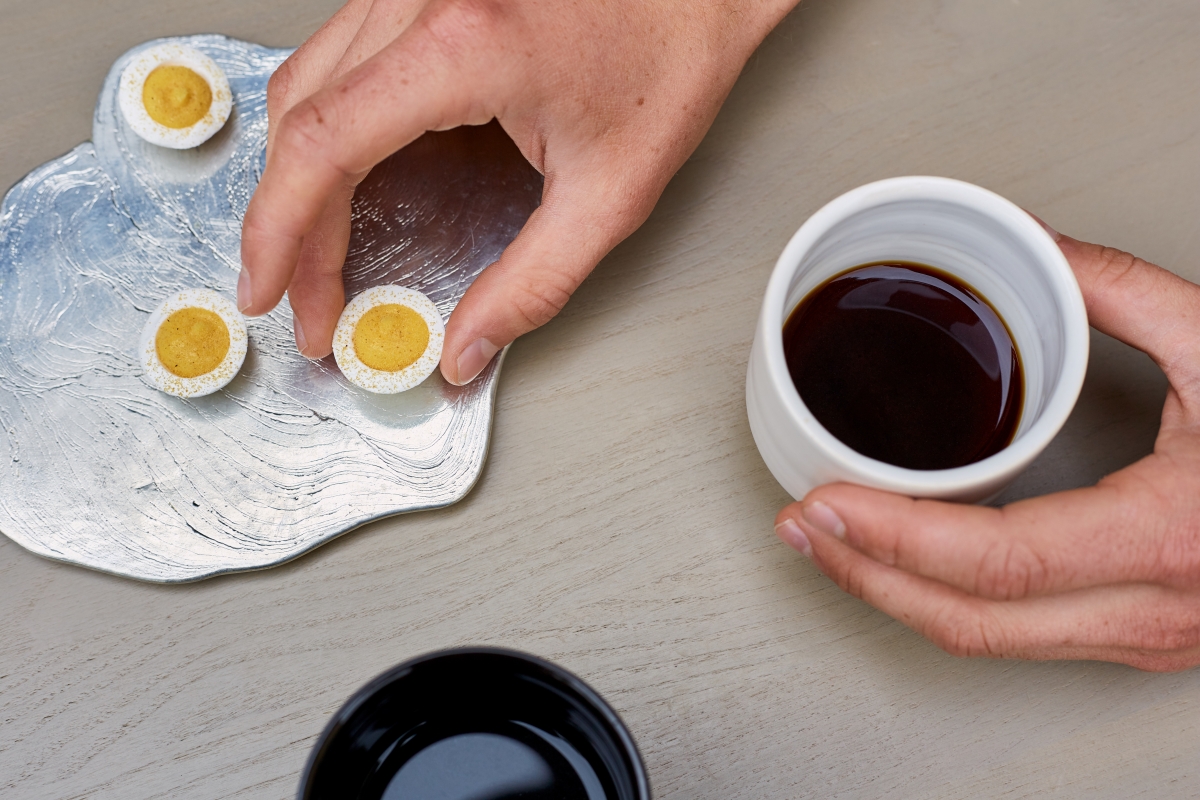
Photo: Vytautas Narkevičius
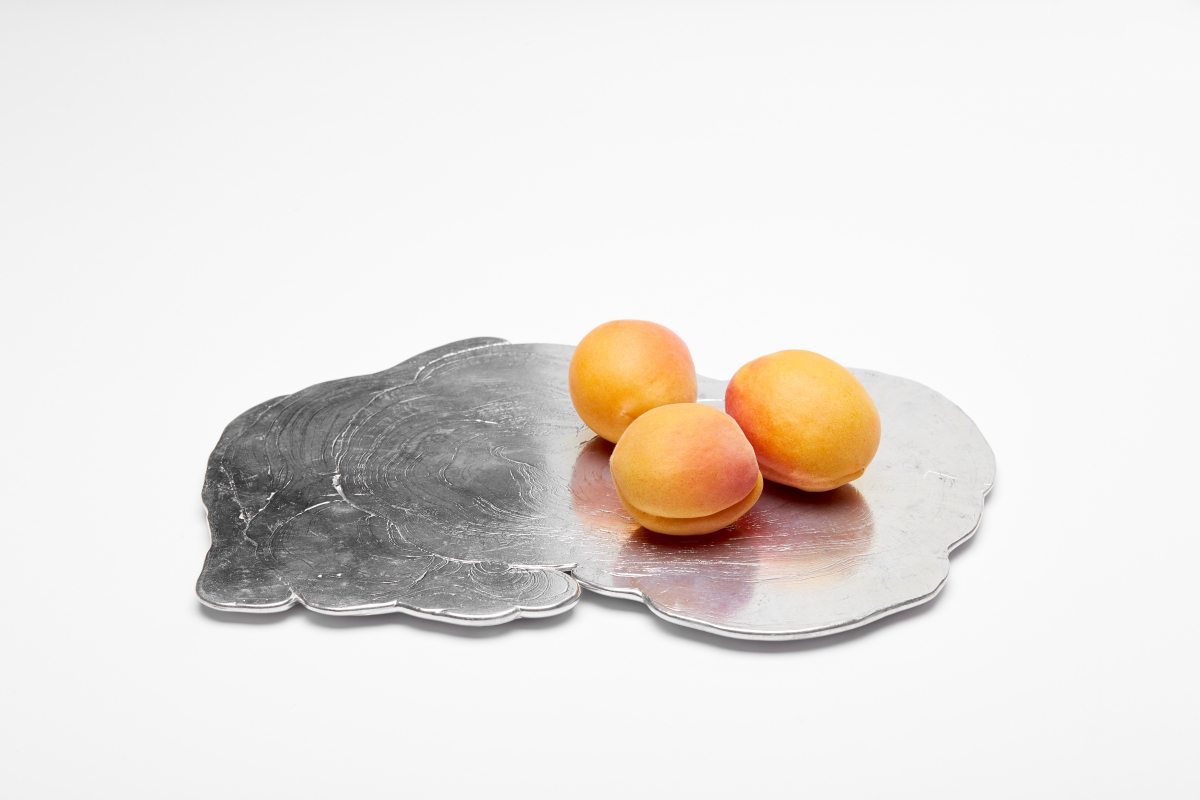
Photo: Vytautas Narkevičius
